Searching ...
Everything You Need to Know About Kitchen Cleavers
Historical Origin of the Cleaver
The kitchen cleaver is a versatile tool that can be an indispensable helper in food preparation. This robust knife is used not only for cutting and chopping meat, but also for crushing garlic, herbs, or breaking bones. In this article, we will explore its history, the differences between various types, as well as tips for proper care and use.
Cleavers have a long history that dates back to ancient Chinese cuisine, where they were used to process large pieces of meat and vegetables. Traditional Chinese cleavers are characterized by a sturdy steel blade and a comfortable handle, making work easier even during intense use. Over time, cleavers spread to various kitchens around the world, with their design adapting to local needs and ingredients.
Lesser-Known Facts About Cleavers
- Cleaver in Asian Cuisine: In some Asian countries, the cleaver is the only knife chefs use for everything – from chopping meat to finely slicing vegetables.
- Use in Traditional Medicine: In ancient China, cleavers were also used to prepare medicinal herbs, which were crushed into paste or powder.
- Testing Quality: High-quality cleavers can be tested by slicing a thin sheet of paper without applying pressure.
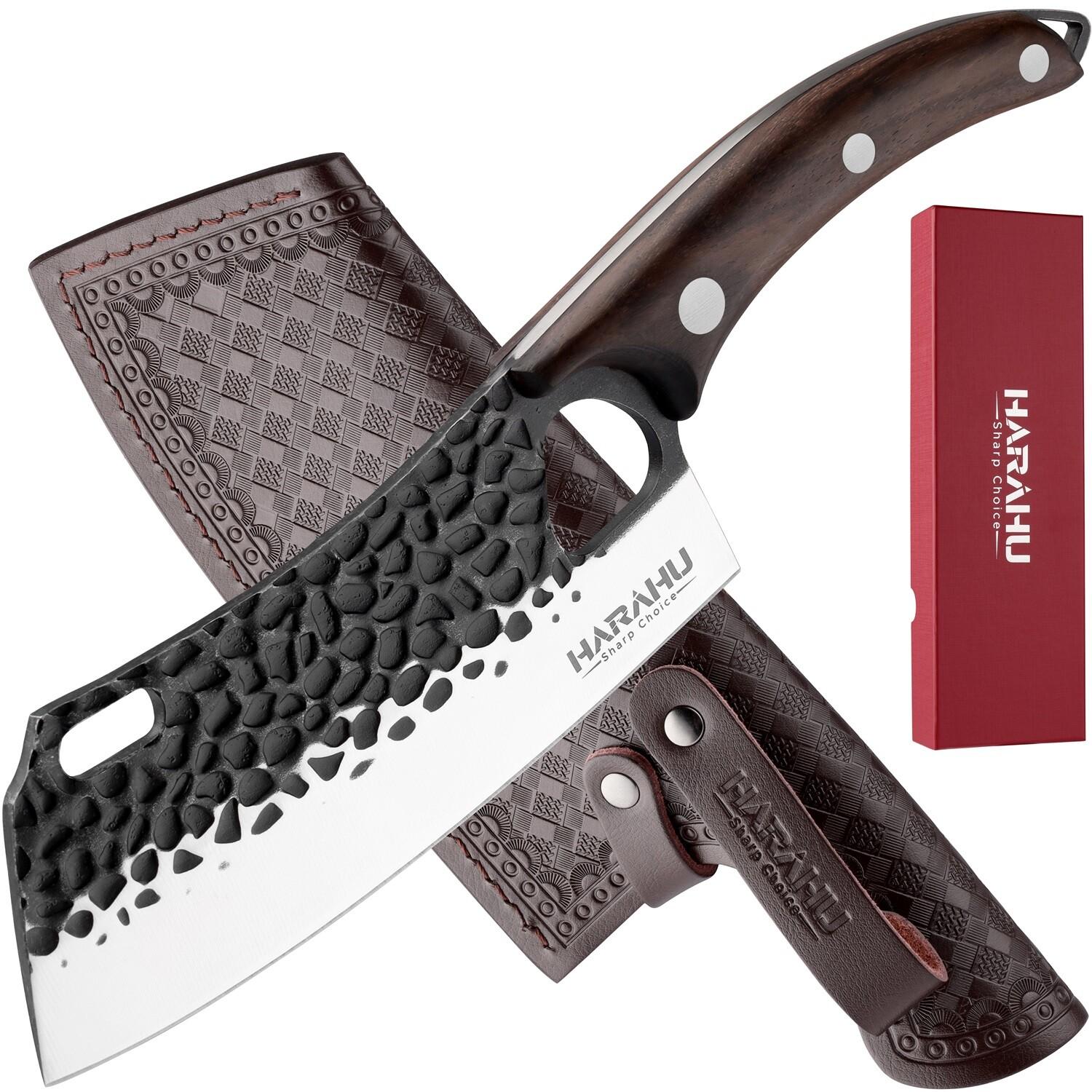
Types of Cleavers by Their Intended Use
- Cleaver (Butcher's Cleaver): A thick and heavy blade designed for chopping bones and large pieces of meat.
- Chinese Cleaver (Cai Dao): A versatile Chinese kitchen cleaver suitable for both meat and vegetables.
- Nakiri: A Japanese cleaver with a flat blade designed for precise vegetable slicing without damaging the produce.
- Usuba: A professional Japanese vegetable cleaver with an extremely sharp blade.
- Deba: A Japanese cleaver for processing fish and poultry, also suitable for chopping smaller bones.
- Bone Chopper: A massive cleaver intended for chopping hard bones, mainly used in butcheries.
- Fillet Cleaver: A cleaver with a thin, flexible blade for filleting meat or fish.
- Butcher’s Cleaver: A strong butcher’s cleaver for handling large cuts of meat.
- Santoku Cleaver: A lighter and more versatile Japanese cleaver suitable for meat and vegetables.
- Poultry Cleaver (Standard): A medium-thick blade strong enough for chopping poultry bones, yet gentle enough for slicing meat.
- Poultry Cleaver: A special cleaver for poultry with an ergonomic handle for easier control.
- Tuna Cleaver: A massive cleaver for portioning large fish, often used in Japanese restaurants.
- Vegetable Cleaver: A light cleaver with a thin blade ideal for quick and precise vegetable cutting.
- Hybrid Cleaver: A combination of a traditional cleaver and a chef’s knife, suitable for various cutting tasks.
- BBQ Cleaver: A robust cleaver specially designed for preparing grilled meats and ribs.

Blade and Handle Materials
Blade Materials:
- Carbon Steel: Extremely sharp and durable, but prone to rusting; requires regular maintenance.
- Stainless Steel: Corrosion-resistant, requires less frequent sharpening, but may not achieve extreme sharpness.
- Damascus Steel: A luxurious and visually appealing material, combining steel layers for maximum strength and sharpness.
- Ceramic: Lightweight and extremely sharp, but fragile and unsuitable for chopping hard ingredients.
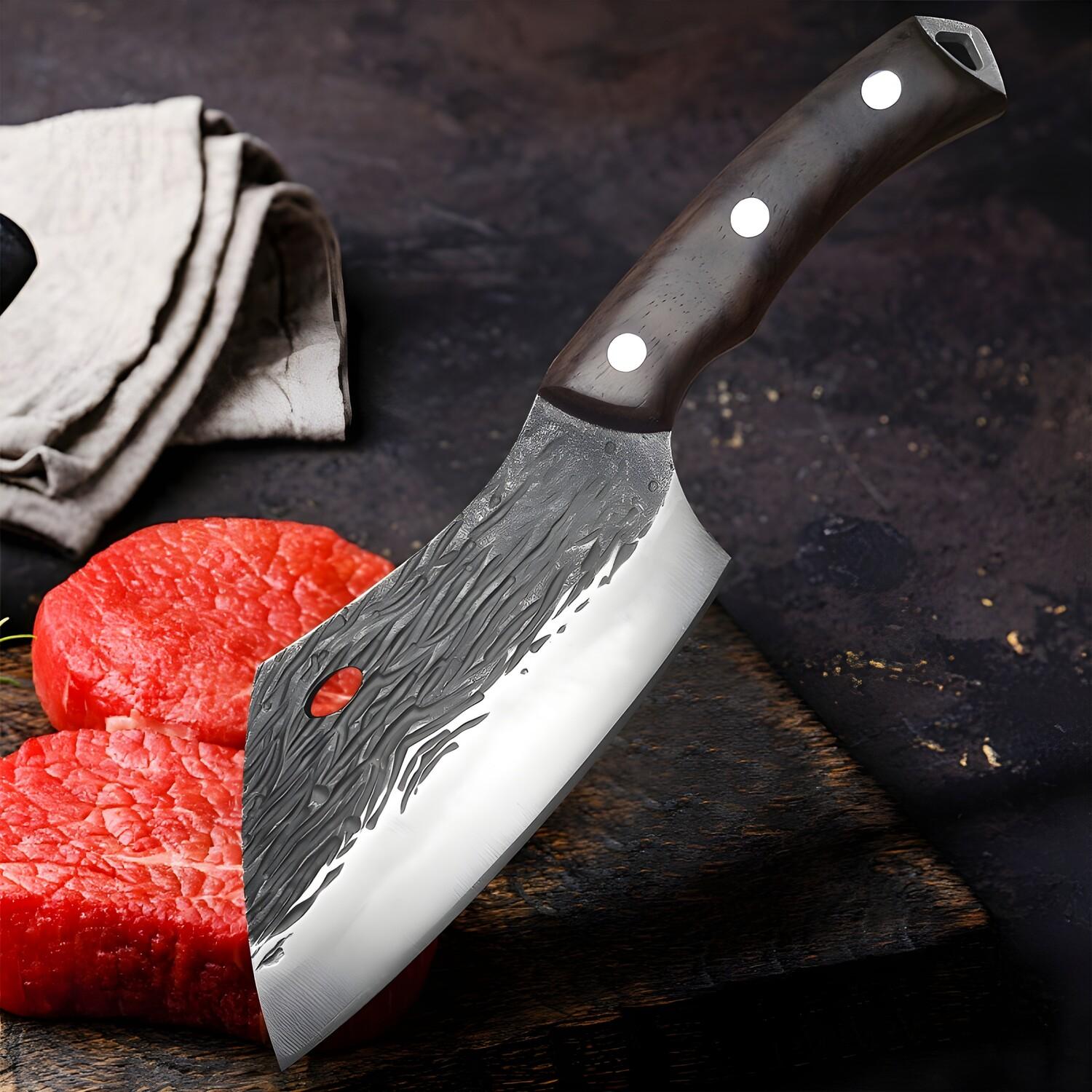
Handle Materials:
- Wood: Comfortable and aesthetic, but requires care to prevent cracking.
- Plastic: Lightweight and durable, less prone to water damage.
- Stainless Steel: Extremely durable, but may be heavier and less comfortable during prolonged use.
- Micarta: A composite material with high durability and a comfortable grip.
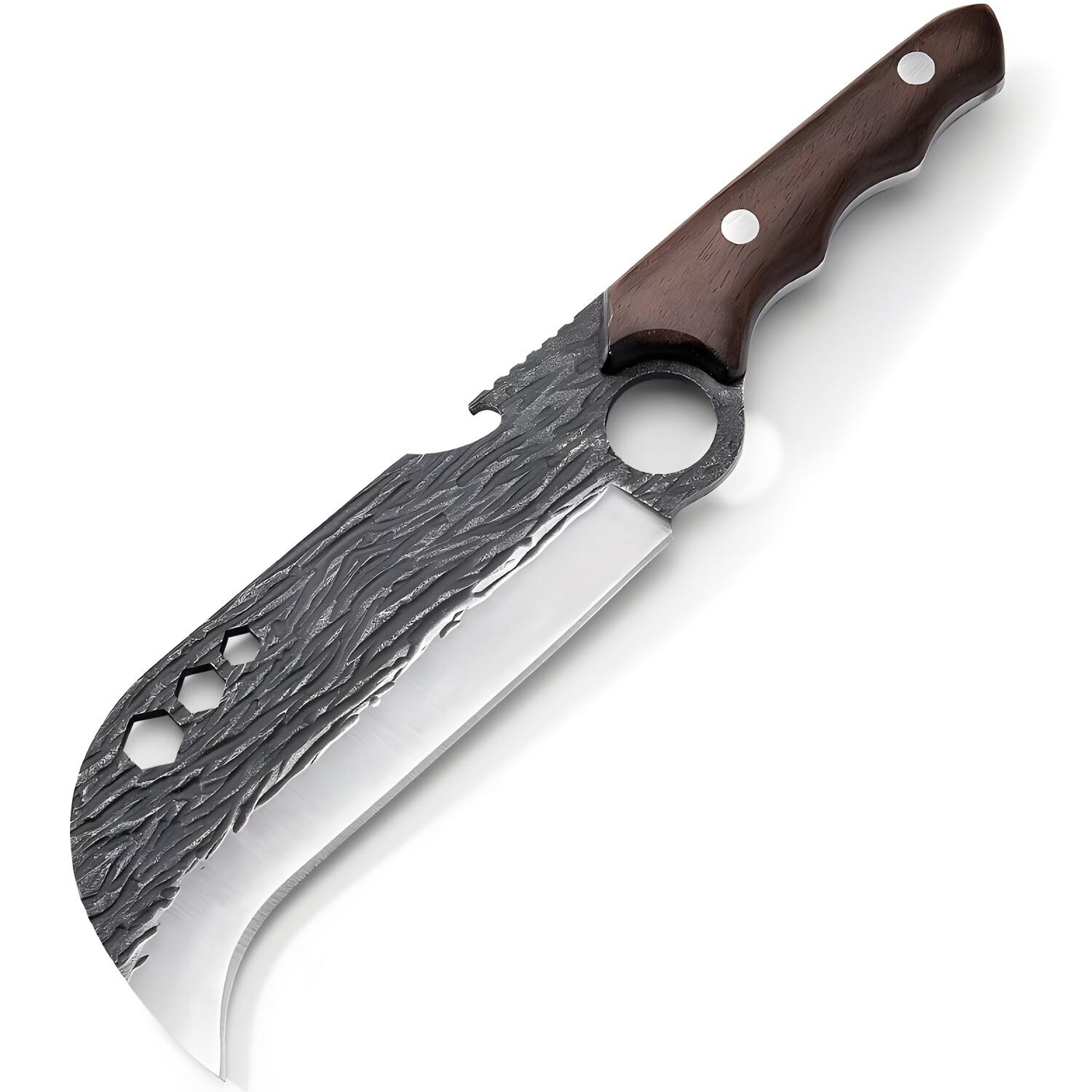
How to Choose the Right Cleaver
- Blade Material: Carbon steel is extremely sharp but requires more maintenance, while stainless steel is more resistant to corrosion.
- Knife Balance: A proper cleaver should be well balanced – if you don’t feel excessive weight in the handle or blade when holding it, it's a good choice.
- Blade Thickness: Thicker blades (over 4 mm) are suitable for tougher tasks, while thinner blades (around 2 mm) are better for precise slicing.
- Handle Type: Wooden handles are comfortable to grip, while plastic or steel ones are less prone to water damage.
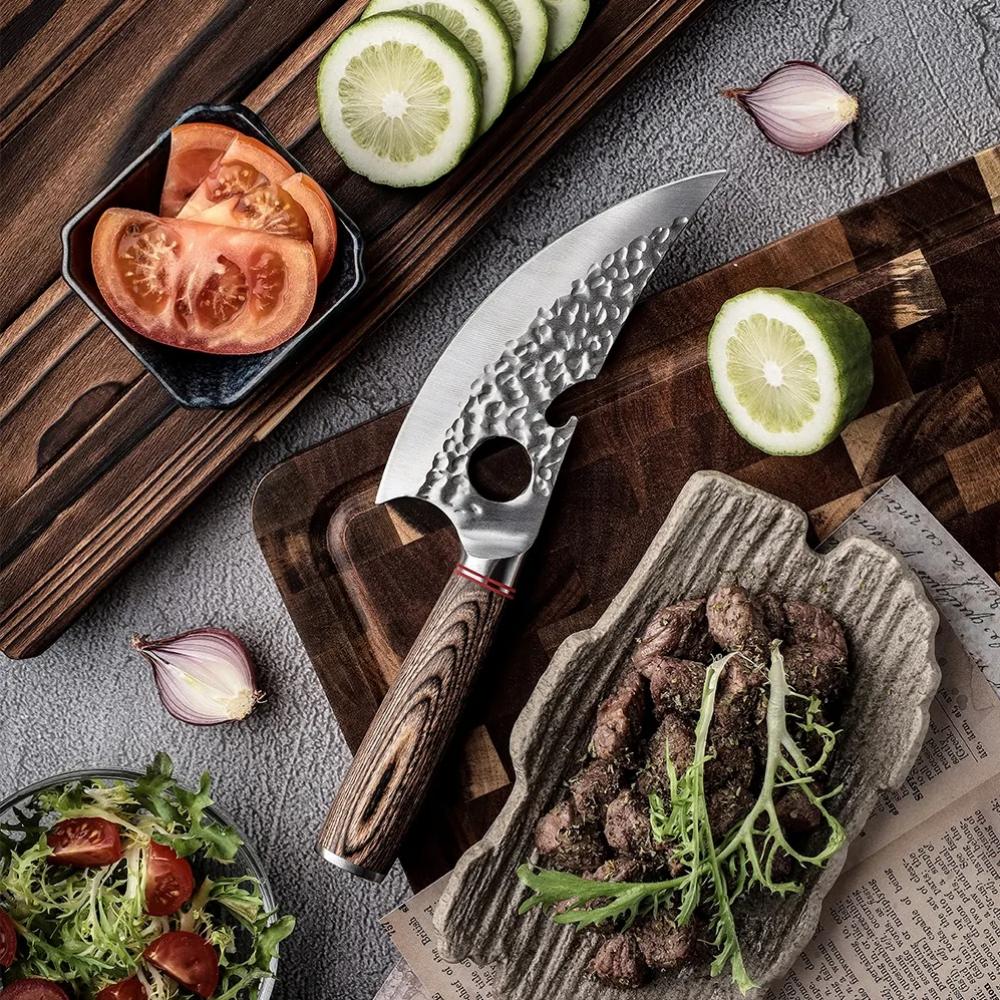
Creative Uses of a Cleaver in the Kitchen
- Crushing garlic and herbs: A cleaver isn’t just for chopping – the wide blade is perfect for crushing garlic or finely mincing herbs with a rocking motion.
- Transferring chopped ingredients: Thanks to the large blade surface, you can easily move chopped food directly into the pot.
- Cracking spices: If you need to crush spices or nuts, just cover them with a towel and gently press with the cleaver.
Cleaver Maintenance
To keep your cleaver in perfect condition for as long as possible, it is important to follow proper maintenance:
- Regular sharpening: Thicker cleaver blades can dull more quickly, so it is important to sharpen them regularly using a whetstone or honing rod.
- Hand washing: After use, wash the cleaver by hand with warm water and mild detergent. Do not use a dishwasher, as it may damage the edge.
- Thorough drying: Always dry the cleaver thoroughly after washing to prevent corrosion, especially for carbon steel blades.
- Oil treatment: For carbon steel cleavers, it is advisable to regularly apply a thin layer of mineral oil to prevent rusting.
- Safe storage: Store the cleaver on a magnetic strip, in a wooden block, or in a protective sheath to avoid unnecessary dulling of the blade.
- Use a proper cutting board: Use the cleaver on wooden or plastic boards. Glass or ceramic boards can damage the blade.
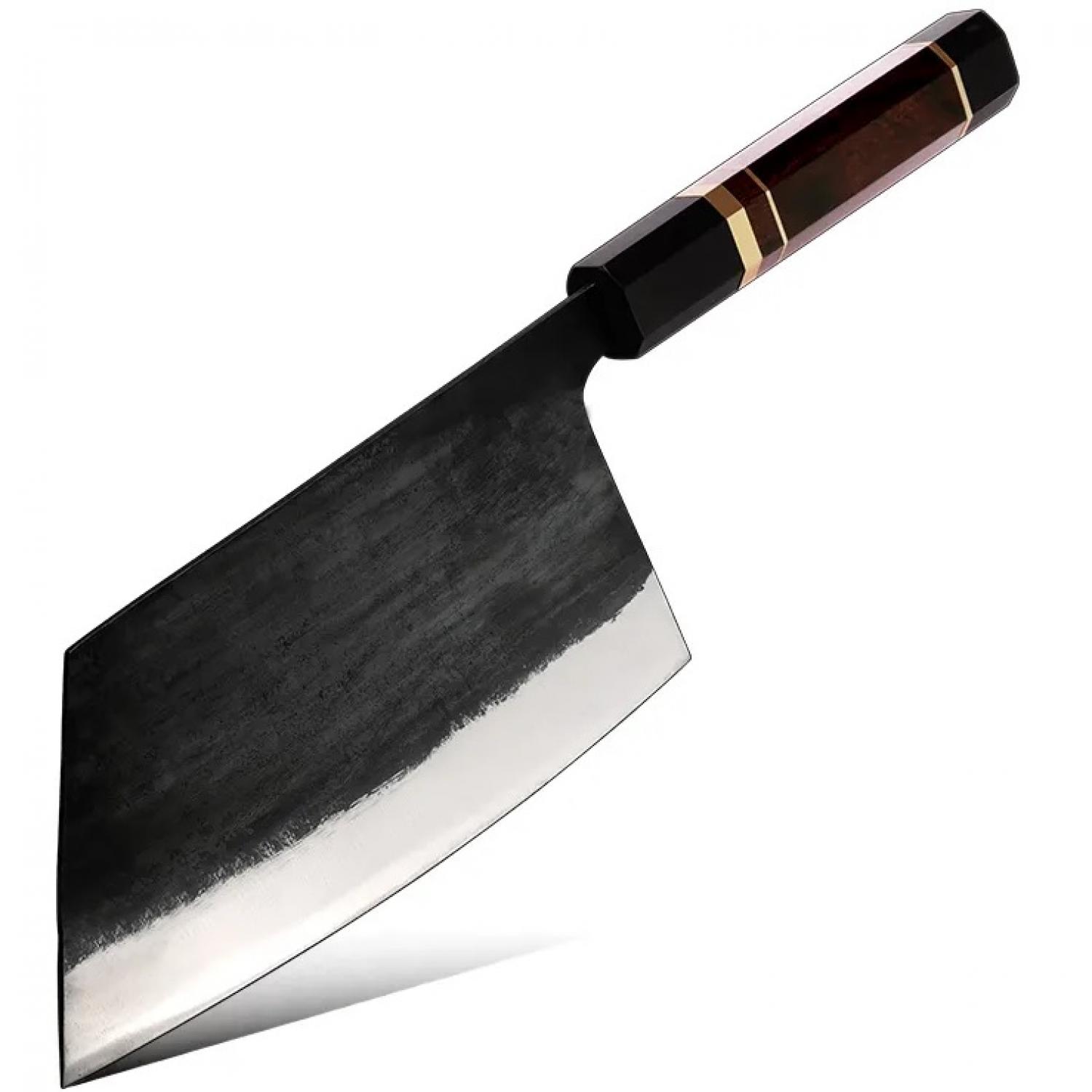
Conclusion
Kitchen cleavers are among the most versatile tools that can simplify food preparation and speed up work in the kitchen. With the right choice and proper care, you will ensure their long life and maximum efficiency. Whether you need a powerful cleaver for bones or a precise tool for vegetables, every kitchen will find its ideal model.